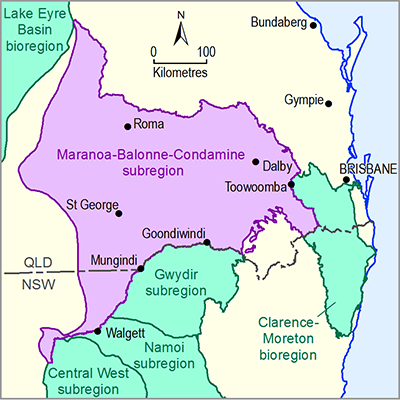Summary
Surface water quality was assessed in three river basins in the Maranoa-Balonne-Condamine subregion: the Condamine‑Balonne, the Moonie and the portion of the Border Rivers river basin. In the upper Condamine river basin, stream nutrients are generally within water quality guidelines (Welsh et al., 2014), whereas the electrical conductivity (EC) ranges from 100 to 800 µS/cm, which is greater than levels found in some other Queensland rivers. In the Moonie river basin, two water quality sampling sites show high total nitrogen, but no trends for EC or turbidity are detected. In the Border Rivers river basin, there are insufficient data to assess the water quality for nutrients, turbidity and EC in most areas.
Groundwater quality in nine aquifers of the Maranoa-Balonne-Condamine subregion was compared to national guidelines for drinking water, stock use and irrigation, provided by the National Health and Medical Research Council (2011), and the Australian and New Zealand Environmental and Conservation Council (2000). Summary statistics and spatial distribution maps for Total Dissolved Solids (TDS), pH and alkalinity, are described for the following aquifers: Condamine Alluvium aquifer, Main Range Volcanics aquifer, Rolling Downs Group aquifer, Hooray Sandstone and equivalents aquifer, Adori / Springbok aquifer, Walloon aquifer, Hutton Sandstone aquifer, Evergreen (Boxvale) aquifer and Precipice aquifer.
Mean TDS ranges from 539 mg/L, for the Evergreen (Boxvale) aquifer, to 2777 mg/L for the Rolling Downs Group aquifers. The lowest median pH was 7.8 (Evergreen (Boxvale) aquifer) and the highest was 8.3 (Hooray Sandstone and equivalents and Precipice Sandstone aquifer). Mean alkalinity was lowest in the Evergreen (Boxvale) aquifer (234 mg/L) and highest in the Walloon aquifer (538 mg/L). Hydrochemical data availability was variable between hydrogeological units and not all analyses contain a full suite of hydrochemical parameters.

